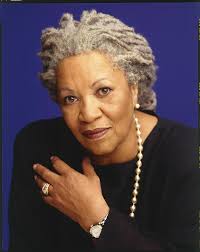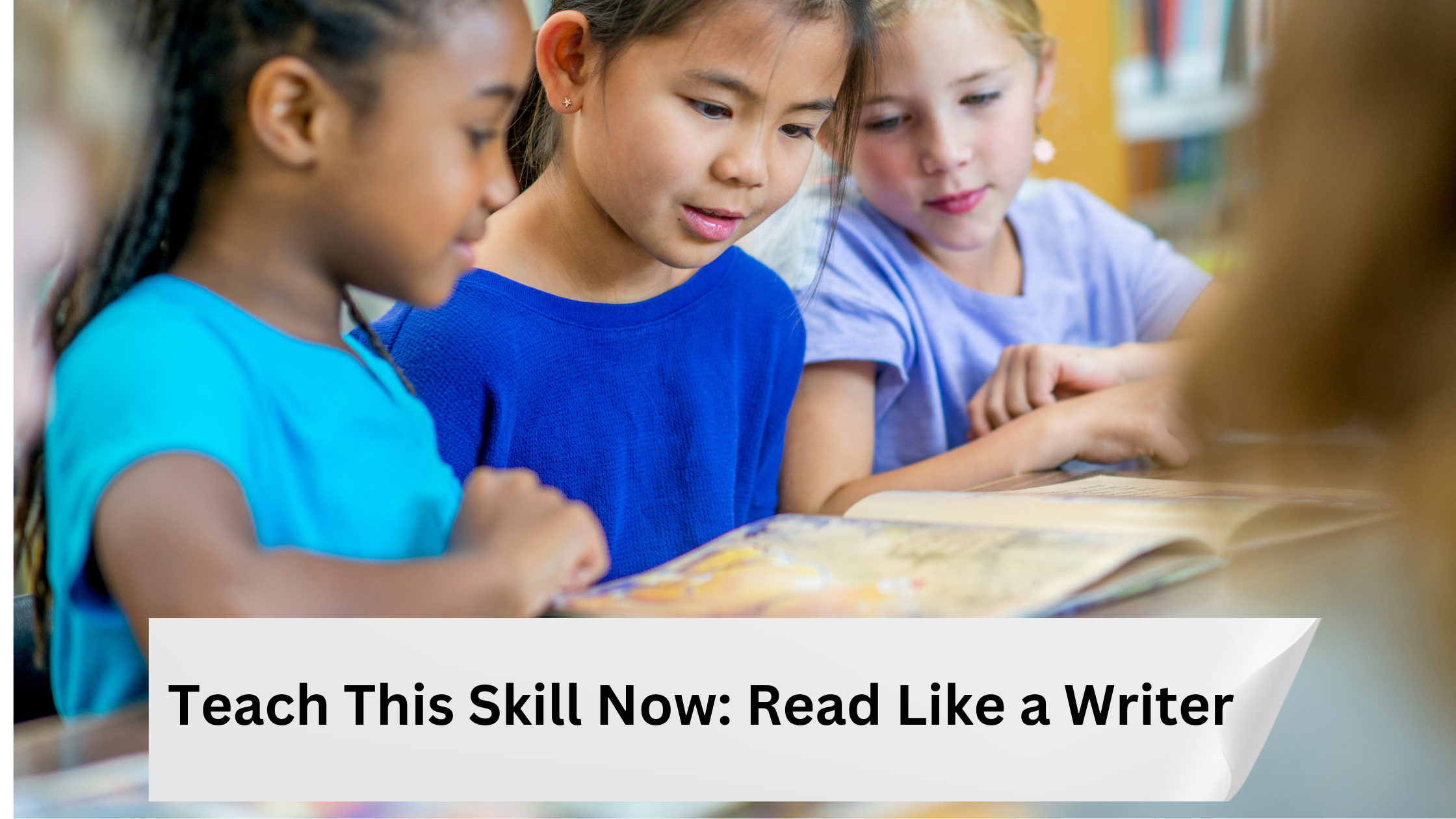“Students need to read as a writer–slowly, carefully, sometimes enviously, always asking, ‘How did they do that?’ The best ‘rules’ we can learn are those we derive from reading authors we admire.”
~Tom NewKirk (2021)
If you look at the work of John Hattie at www.visiblelearningmetax.com you will see that inquiry has a “potential to considerably accelerate” achievement. What does inquiry look like in writing class?
One way to do this is to facilitate the writer skill of “reading like a writer.”
Reading like a writer is a special kind of close reading that writers do as they read texts (Anderson, 2022). Many times, our students read a text like a reader with a focus on comprehension (ie content). In fact, this is a necessary step to do prior to using a mentor text when you read like a writer. They must first read like a reader. Then read like a writer.
Reading like a writer is when you study a text and make noticings about what the author intentionally did (or what the illustrator intentionally did) to compose their book.
Did they start with action?
Did the author use capital letters and bigger font?
Did they bounce back and forth between narration and dialogue?
Did the illustrator zoom in to show detail?
Did the author use number or description details in a non-fiction text?
Do the captions give ADDITIONAL information not in the main body of the text?
Did they intentionally use a scene to progress the theme of the book?
Why does reading like a writer matter? Anytime we, as adults, start something new, we look at an example. Redoing your kitchen? You look at possibilities on Pinterest or go look at a sample kitchen at a home store.
Writing a grant? You look at one that’s been completed before so you know how to write it.
Learning how to do proper form as you lift weights? You watch a youtube video or work with a trainer to see how it’s done.
This life skill of reading like a writer is game-changer in the writing classroom.
We often say we are going to teach our kids to be “life-long learners.” This is one way you do it in writing class. Because once they learn to independently read like a writer–meaning they do it so effortlessly, without teacher prompting, they have a tool that will help them write now and into adulthood.
How do you go about facilitating the SKILL of reading like a writer?
You have to practice it yourself first.
As I was working with teachers to improve writing instruction district-wide, one of the most vital professional learning activities we did was to have teams of teachers read a text together and study it with an inquiry lens and notice what the author did.
Our teachers responded with comments like this: “Oh, I didn’t even think about teaching details in narrative text by using dialogue, action, thoughts and setting details. I never really knew how to teach my kids to add details, but after noticing them in our published text, I see now. And, I can show them how real authors do it!”
Gather a text of engaging mentor texts that you can use in your next unit and set aside time for your team to do this. Will it come naturally to you? No. Will you get better at it in time? Yes! (This will be the same scenario for your students so it’s good for you to realize it’s a skill you have to develop, too).
Have the students practice this skill through the year.
When trying to work with students on developing their SKILL of reading like a writer, do the following:
- Choose an ENGAGING mentor text that you know has obvious teaching points in it (ie good word choice, facial expressions, action details). You want to start with EASY things to notice until your kids become more proficient at this.
- Model the thinking process and be okay with modeling it over time. Your kids won’t be proficient at this in the first unit or even in the second unit. But, if you do this in every unit, by the end, they will improve dramatically in their ability to read like a writer.
- Refer to the author by name. So, if you’re students notice that Marla Frazee uses capital letters to emphasize a noise (WHOOSH!), say “You noticed that Marla Frazee uses capital letters to emphasize a noise.” Why mention the author by name? It allows your students to connect with a REAL person–someone they can study now and into the future. And, they can be “just like Marla,” which will positively impact their writing identity.
- Study just a few pages from the book. You will be surprised by the rich discussion that comes from a couple of pages. Study less and take inquiry deeper.
- Show how YOU used the technique in your writing. This is IMPERATIVE because you are showing the TRANSFER of the skill of noticing to actually trying it out. And, you are showing them you are a writer, too.
- Model the thinking process of “What page might I want to add this technique to?” We don’t (and can’t) expect kids to try out the techniques we teach all the time. Sometimes, it doesn’t make sense given the book they are writing. Show them where it might make sense in your book.
- At the end of your lesson, say “I’m wondering how you might try this out in your writing…” You could have them turn and tell a partner or even have them flip through their book briefly to consider this before you send them off to write.
You’ll want to model and practice reading like a writer in your whole-group lessons, small groups, conferences and maybe even during share/reflection time. It’s an embedded piece in your writing block that should become “just what we do in our writing class.”
Let’s end with a few published authors and their thoughts on reading like a writer.

“From a really young age, I was reading like a writer. I was reading for the deep understanding of literature; not simply to hear the story but to understand how the author got the story on the page.” ~ Jacqueline Woodson

“If you don’t have time to read, you don’t have the time (or the tools) to write. Simple as that.” ~ Stephen King

“I really do one thing. I read books…I write books. I think about books. It’s one job.” ~ Toni Morrison



